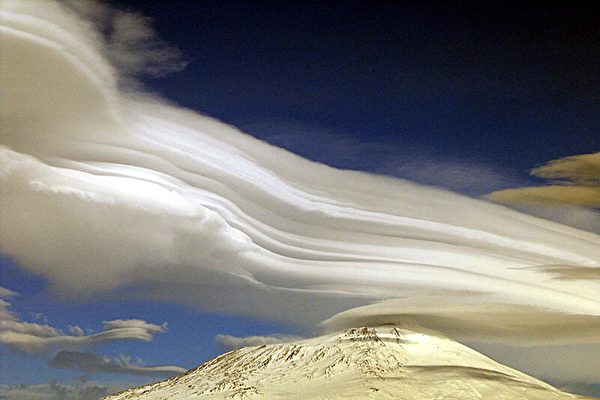In the remote regions of Antarctica, where money is not known to grow on trees, it seems that money can indeed “fall from the sky”. The continent is home to a significant number of volcanoes, with one active volcano in particular spewing out gold dust, also known as gold powder, which holds currency value. It is estimated that this volcano releases approximately 80 grams of gold a day, worth around $6,000.
According to a report by “IFL Science”, the active volcano capable of releasing gold is none other than Mount Erebus in Antarctica.
Antarctica may be a land shrouded in ice and snow with extremely low temperatures, but it also harbors intense volcanic activity. Mount Erebus stands as one of the most violent volcanoes in Antarctica and one of the highest active volcanoes on the continent, reaching an elevation of 3,794 meters (12,448 feet), making it the southernmost active volcano known on Earth.
This volcano frequently emits gas and steam plumes. In past volcanic activities, it has ejected partially melted rocks known as “volcanic bombs”.
Most peculiarly, scientists have discovered that the gas emitted by the volcano contains tiny gold metal crystals. U.S. geologists found particles ranging from 0.1 to 20 microns in the volcano’s gas and 60-micron particles in nearby snow. It is estimated that the gold released by the volcano in a single day amounts to around 80 grams, valued at approximately $6,000.
The gold dust spreads far and wide. Researchers in Antarctica detected traces of gold in the air even 1,000 kilometers (621 miles) away from the volcano.
Although no one is getting rich from the gold dust released by Mount Erebus, many gold deposits originate from volcanic rocks. Hence, if geologists can understand how volcanoes concentrate this metal, they could potentially discover gold mines more effectively.
The name “Erebus” for the volcano comes from the dark embodiment in Greek mythology. It is said that in 1841, Captain James Clark Ross first witnessed its eruption.
Upon careful observation of satellite images of this massive entity, one can notice slight red marks at the summit crater. Notably, there is a scorching lava lake here that has been bubbling since at least 1972.
As reported by the scientific magazine “New Scientist”, the lava eruptions of Mount Erebus release hot gases containing gold and other substances that vaporize at 1000 degrees Celsius. Upon contact with the air, the gases cool to below 100°C, depositing various materials, including metals like zinc and copper. This process occurs within a range of one to two meters from the hot lava.
Philip Kyle from the New Mexico Institute of Mining and Technology suggests that the gold emitted by the volcano may crystallize on the surface of the lava shell.
In addition to ejecting gold dust, Mount Erebus has also garnered global attention due to a tragic aviation incident. On November 28, 1979, Air New Zealand Flight 901 crashed into the volcano while in flight, resulting in the loss of all 257 passengers on board, marking one of the deadliest aviation disasters in New Zealand’s history.

